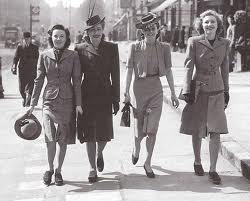The silencing of Big Ben and the muffling of bells and drums for the funeral
of Margaret Thatcher (17th April 2013) made me reflect on the importance of bells and their part
in our history and ceremonial of the
City of London and the whole country at
large.
St Paul’s Cathedral in particular the great Wren masterwork
and its role in honouring the great and good after death.
| English: This print of the bell named Great Tom depicts one of the great bells associated with both the Palace of Westminster and St Paul’s Cathedral, England. (Photo credit: Wikipedia) |
The north-west tower contains twelve bells hung for change
ringing plus a service bell, while the south-west contains four. This includes
a bell named ‘Great Paul’, at 16 ½ tons the largest bell in the British Isles,
cast in 1881 by Taylor’s bell foundry of Loughborough, Leicestershire.
Check out Church Bells of London http://london.lovesguide.com/paul_cathedral.htm. This article
cannot be bettered for pictures and detailed information so do take a look.
This bell is just about contained in its tower – it’s so large!
Great Tom is only rung on occasions of a death in the royal
family, the Bishop of London, or the lord Mayor of London, although an
exception was made at the death of the US President John Garfield.
Richard Phelps cast two more bells in 1717 and added as ‘quarter
jacks’. They are still in use today and
for those bell ringers amongst us, some
statistics; the first weights 13 long hundred weights (1,5000 lbs; 660kg) is
41” inches (1000mm) diameter and is tuned to A flat; the second weights 35 long
hundredweights (3900 lbs; 1800kg) is 58” (1500mm) diameter and is tuned to E
flat.
| St. James Garlickhythe Church (Photo credit: steve.wilde) |
/www.telegraph.co.uk/news/uknews/the_queens_diamond_jubilee/9293191/Queens-Diamond-Jubilee-bell-ringers-rehearse-on-Thames-barge.html
The church and original bells were destroyed by the Great
Fire in 1666 and rebuilt to a design by Sir Christopher Wren, it has high clerestory windows which diffuse
the church with light and is often called ‘Wren’s Lantern’. The woodwork in
this church is outstanding. New bells
were installed from 1682 onwards but are now replaced by the new ring of eight
bells which were ringing through London on the barge ‘Ursala Katharine’ at a
quarter peel. The bells were dedicated
on 17 June 2012.
Other points of interest about the church. St James
Garlickhythe was damaged when a crane fell from across the street in 1991. Pews
were damaged but replaced by oak pews made from trees blown down on a Sussex
estate in the hurricane of 1987.
Small table on either side of the altar are made from wood
from the Marchioness pleasure boat which sank in 1989 with the loss of many
young lives.
It also has connection with the Vintners Livery Company
(across Upper Thames Street) and this is acknowledged by a wrought iron gate
with grapes and vine leaves intertwined.
| The Barge Master And Swan (Photo credit: steve.wilde) |
A lovely sculpture dedicated to the Barge Master & Swan
by Vivien Mallock (2007) stands in the courtyard, this is a reference to the
ancient ceremony of Swan Upping carried out by the HRH Queen Elizabeth II,
Vintners and Dyers Companies, the only three parties who have the right to keep
and manage swans in the country, by Royal decree. The cygnets, young swans are
tagged during a special ceremony called ‘Swan Upping’ and takes place during
the third week in July.
This article originally appeared in http://londoneer.org/





And now we've the new Robert Hooke Biodviersity bell outside St Paul's Cathedral Gardens - it's a model for what will be an absolutely huge bell - part of the http://www.memoproject.org/ project. Also see http://markontour.wordpress.com/2013/04/27/the-robert-hooke-biodiversity-bell/ for a picture and comment.
ReplyDelete